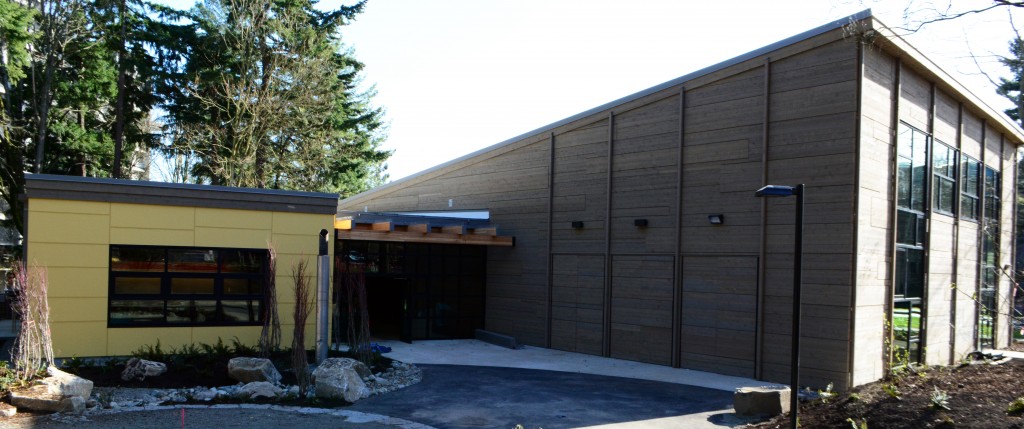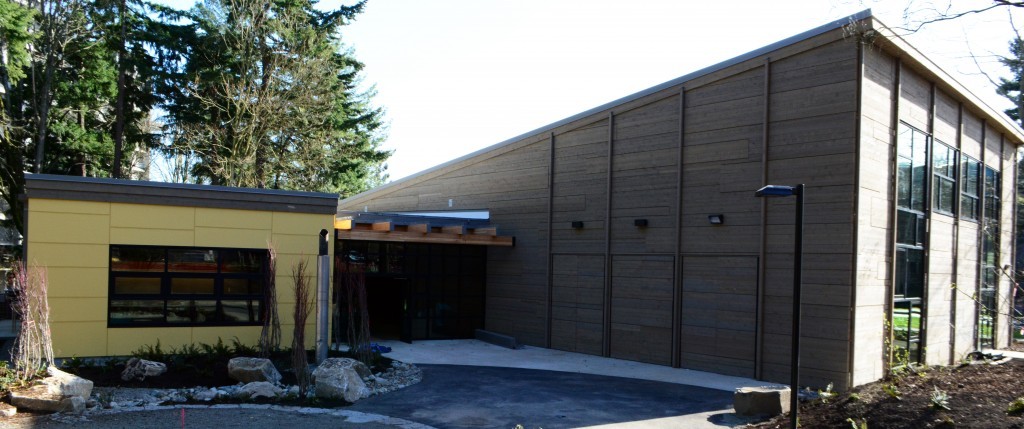

By Daniel Blume
It was a long time coming for the group of students, faculty, and tribal members who envisioned the Native American longhouse project over 40 years ago. The University of Washington inaugurated the longhouse on its campus on March 12th 2015, making it only the third college in Washington State to do so, following Peninsula College.
The longhouse, called “Intellectual House” in English, whose original name is in Lutshootseed language, is built on the historic location of an important village for the Duwamish Tribe.
When Peninsula College student Jon Greene, a member of the Makah Tribe, visited the Intellectual House, he couldn’t help but feel a bit “shocked” at its modernized appearance. Greene soon realized, however, that the “spirit of a longhouse” was present. In his words, it “stays true to the traditional essence and holds the core values, but it has a modern twist.” Traditionally, a longhouse is built with no windows, but Intellectual House has them on one end of the main room. A similar issue with windows came up in the planning of PC’s “House of Learning” Longhouse.
Former faculty member Maria Peña explained that, “the first design forwarded by the architect was of a full glass longhouse. The thought was ‘let’s have a building that you can sit in and enjoy the surroundings.’ Yet, we learned overtime from the tribal representatives that that wasn’t what traditional longhouses in this area were about. As a matter of fact, they didn’t have any windows whatsoever. Of course, we worked with what the tribal leaders and representatives said, and there are of course no windows in this longhouse.”
If the lack of knowledge shown in the original design of the House of Learning is any indicator of the average non-Native’s understanding of traditions, then the longhouse should prove to be invaluable as a learning tool for the greater community. The longhouses at PC and UW are meant as gathering places for the sharing of cultural traditions, art, and knowledge, with the intention of building bridges of understanding and respect. They are also meant to serve as a welcoming place and a “home away from home” for Native American students, who sometimes find it difficult “to balance [their] Native identity with the other,” said Greene.
Staff at both colleges; hope to see an increase in enrollment and retention of Native students with the addition of the longhouses. In fact, according to Ross Braine, UW Tribal Liaison, Intellectual House has already attracted new Native American faculty members. The UW Office of Minority Affairs & Diversity reported that, as of autumn 2014, Native American students made up only 1.34% of undergraduates enrolled at the university. Currently, Native Americans make up 8% of Peninsula College’s student body.
UW is currently planning Phase II of its longhouse project, with fundraising now in progress, and is slated to begin construction when enough funds have been raised. Phase II will include a second building for “teaching and learning”, with features like an art lab and carving shed, as well as additional classroom space.
To make a donation, head over to [washington.edu/giving/make-a-gift]
